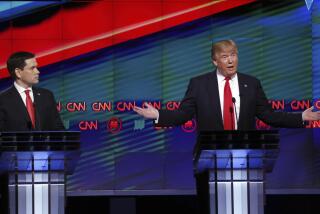Bad Advice for Gorby : INSIDE PERESTROIKA: The Future of the Soviet Economy<i> by Abel Aganbegyan; (Bessie/Harper & Row: $19.95; 241 pp.) </i>
- Share via
“Inside Perestroika” is a sad book by what in many ways is a sad man. It reflects, often inadvertently, just how difficult it is to implement true economic reform in the Soviet Union. Not only does a reformer like Gen. Secretary Mikhail Gorbachev have to deal with outright opponents of his reform efforts, but he must also be wary of those like Abel Aganbegyan who sincerely want to help. Once one of Gorbachev’s chief economic advisers, Aganbegyan here offers some of the same advice which, no matter how well intentioned, has precipitated some of the Soviet Union’s current problems.
That Aganbegyan should have allowed such a book to appear with his name on it is also sad. The book is poorly organized and appears to be a random collection of articles or speeches hung together with little concern for transitions or editing. The first paragraph of the book seems to break in on some conversation and there is repetition along with contradiction throughout. By haphazardly throwing together such an ill-fitting and unorganized collection of musings, the publishers have done Aganbegyan an enormous disservice.
What is so sad about the effort is that Aganbegyan, who for many years was regarded as one of the Soviet Union’s most able, insightful and influential economists, comes off here so unorganized and unimaginative. The fact is, however, that in the pre-Gorbachev years he stuck his neck out for the proper causes and for good economic analysis when it was not always the thing to do. For that, he was denied the right to travel to the West for several years. But operating from an outpost of the Soviet Academy of Sciences in Siberia, he created an economic journal nicknamed “EKO” that served as one of the chief forums for proponents of reform.
It was from his Siberian retreat that Aganbegyan ultimately came to Gorbachev’s attention. While still an ordinary member of the Politburo, Gorbachev decided to convene some informal seminars on Soviet agriculture which at the time was one of his responsibilities. These eventually broadened into an examination of the Soviet economy itself. Thus in a break with Soviet precedent, by the time he became General Secretary, Gorbachev had already availed himself of the type of academic brainstorming that was more typical of the United States.
Because he had so cogently and honestly focused on what was wrong with the Leonid Brezhnev-era economy, it was heartening to see Aganbegyan play such an important role. Unfortunately much of his advice was misguided. Aganbegyan was at his best in showing how the tightly constructed and centrally administered Stalinist economic system had destroyed incentives and perverted the Soviet economic system. However he had become too much a part of that system to make the radical break that any successful reform ultimately requires. Thus he could not bring himself to challenge the Soviet Union’s historic emphasis on heavy industry, machinery, and what Aganbegyan protectively refers to as engineering. Soviet leaders have always emphasized this aspect of economic growth even though it came at the expense of consumer goods and consumer sovereignty. Recently other Soviet economists have gone beyond Aganbegyan and now understand that the real reason for the Soviet lack of incentive and its poor productivity is the failure to provide for Soviet consumers. Some have even begun to place the blame for perestroika’s failure on Aganbegyan and his misguided advice to Gorbachev. Even though Aganbegyan now has started to place more emphasis on consumer goods, his critics insist that his lack of concern for Soviet consumers precipitated a series of reactions that today has resulted in a lower standard of living than when Gorbachev took over four and a half years ago.
But as reflected in those essays, Aganbegyan still finds it hard to break out too far beyond his traditional framework. Thus rather than rely too much on markets and market forces, he seems to feel a continuing need for at least some price setting by a ministry of prices, which has been a perennial source of past distortion. He also seems very much committed to a yearly and five-year plan and to other such all-encompassing solutions. He has trouble understanding inflation and unemployment which on occasion he claims have not existed in the Soviet Union.
In what is perhaps the saddest portion of the book Aganbegyan finds it necessary to prove himself by dropping an embarrassing list of names, from Margaret Thatcher to Helmut Kohl to the Essalen Institute (which for some mystical reason he allowed to finance his trip to the United States).
The most redeeming portions of the book are those that deal with his experience during the Stalin, Khrushchev, and Brezhnev years and his observations about the shortcomings of the Soviet economy at the time. These provide a fascinating and heretofore unavailable look at political infighting among Soviet economists. Yet if perestroika is to succeed it will take more than insightful criticisms of the past. Unfortunately, based on this set of essays, Aganbegyan does not seem able to make that jump.
More to Read
Sign up for our Book Club newsletter
Get the latest news, events and more from the Los Angeles Times Book Club, and help us get L.A. reading and talking.
You may occasionally receive promotional content from the Los Angeles Times.










